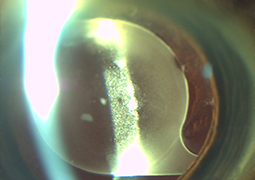Objective: To compare the incidence of postoperative complications after cataract surgery in current types of acrylic intraocular lenses (IOLs) in relation to the material used to manufacture the implant, published in the scientific literature.
Methodology: Search for publications in the Pubmed database, published in 2015–2024 (inclusive), without language restrictions, featuring the keywords Hydrophobic, Hydrophilic, Intraocular lens. Reviewing all abstracts and excluding publications that do not match the specified topic.
Results: A total of 220 works were published in the last 10 years that met the specified keywords. Of these, 92 publications were dedicated to the comparison of both types of IOLs. These were 4 meta-analyses, 10 reviews and 47 clinical studies, 21 laboratory and experimental studies and 10 studies of a different nature (editorials, considerations, chapters in textbooks).
Conclusion: Current types of soft acrylic intraocular lenses achieve excellent refractive results and high subjective patient satisfaction. This applies to lenses made of both hydrophilic and hydrophobic materials. The main disadvantage of hydrophilic implants is the higher risk of opacification of the posterior capsule of the lens, as well as the risk of opacification of the implant itself. Especially in patients who are expected to undergo subsequent surgery (corneal endothelial dystrophy, retinal pathology), as well as in patients with a higher risk of complications after Nd:YAG laser capsulotomy (patients with myopia, chronic uveitis or glaucoma), the use of hydrophobic material should be considered as a priority.

